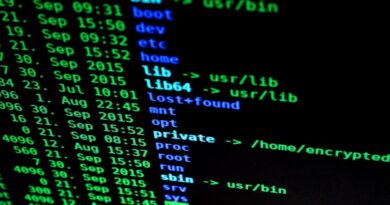Unlocking the Power of Multi-Factor Authentication
With cyber threats on the rise and data breaches becoming increasingly common, the need for robust security measures has never been more critical. In a world where passwords alone are no longer enough to protect sensitive information, multi-factor authentication (MFA) has emerged as a powerful tool in the fight against cybercrime. But how can you leverage this technology effectively to safeguard your digital assets? In this comprehensive guide, we will explore the ins and outs of multi-factor authentication, from its basic principles to advanced strategies for implementation. Let’s dive in and discover how you can enhance your security posture with MFA.
The Basics of Multi-Factor Authentication

Multi-factor authentication is a security process that requires users to provide two or more forms of verification before granting access to a system or application. These factors typically fall into three categories: something you know (such as a password), something you have (like a smartphone or security token), and something you are (such as a fingerprint or facial recognition). By combining these different factors, MFA creates a layered defense that makes it significantly harder for unauthorized users to gain entry.
One of the most common implementations of MFA is two-factor authentication (2FA), which combines a password with a one-time code sent to a user’s mobile device. This additional layer of security significantly reduces the risk of unauthorized access, as even if a hacker manages to obtain a user’s password, they would still need access to the second factor to log in successfully.
The Benefits of Multi-Factor Authentication

There are numerous benefits to using multi-factor authentication in your security strategy. One of the most significant advantages is the enhanced protection it provides against various cyber threats, such as phishing attacks, brute force attempts, and credential stuffing. MFA significantly reduces the likelihood of unauthorized access, even if an attacker manages to compromise one factor.
Furthermore, multi-factor authentication can help organizations comply with regulatory requirements and industry standards, such as the General Data Protection Regulation (GDPR) and the Payment Card Industry Data Security Standard (PCI DSS). By implementing MFA, businesses can demonstrate a commitment to protecting their customers’ data and maintaining a secure environment for sensitive information.
Moreover, multi-factor authentication can also improve the user experience by reducing the burden on users to create and remember complex passwords. With MFA, users can enjoy a seamless and secure authentication process that minimizes the risk of account compromise.
Best Practices for Implementing Multi-Factor Authentication

While multi-factor authentication offers significant security advantages, its effectiveness ultimately depends on how well it is implemented. To maximize the benefits of MFA, consider the following best practices:
1. Choose the Right Factors
When implementing MFA, it’s essential to select factors that offer a good balance between security and convenience. While passwords are a common factor, consider incorporating biometric authentication, such as fingerprint or facial recognition, for an added layer of security. Additionally, using a one-time code delivered via SMS or a mobile app can further enhance the security of the authentication process.
2. Implement Adaptive Authentication
Adaptive authentication is a form of MFA that adjusts the level of security based on the risk associated with a particular login attempt. By analyzing various factors, such as the user’s location, device, and behavior, adaptive authentication can dynamically determine the appropriate level of security needed for each authentication request.
3. Educate Users About MFA
Effective communication is key to the successful implementation of multi-factor authentication. Educate users about the benefits of MFA, how to set it up, and best practices for using it securely. Providing clear instructions and guidance can help users understand the importance of MFA and encourage them to adopt secure authentication practices.
4. Monitor and Analyze Authentication Events
Regularly monitoring and analyzing authentication events can help identify potential security threats and anomalies. By tracking login attempts, user behavior, and authentication failures, organizations can proactively detect and respond to suspicious activity before it escalates into a full-blown security incident.
5. Secure MFA Implementation
Ensure that the implementation of multi-factor authentication is secure and resistant to attacks. Use encryption to protect sensitive data, regularly update authentication mechanisms, and implement strong access controls to prevent unauthorized changes to the authentication system. Additionally, consider implementing fraud detection capabilities to identify and respond to fraudulent activities.
Common Misconceptions About Multi-Factor Authentication

Despite its many benefits, multi-factor authentication is not without its misconceptions. One common misconception is that MFA is only necessary for high-risk applications or industries. In reality, MFA can benefit any organization, regardless of its size or industry, by providing an additional layer of security against a wide range of cyber threats.
Another misconception is that multi-factor authentication is a one-size-fits-all solution. While MFA is a powerful security tool, its effectiveness can vary depending on the factors used, the implementation method, and the user’s behavior. It’s essential to tailor MFA to your organization’s specific security needs and requirements to maximize its effectiveness.
Conclusion
Multi-factor authentication is a powerful security tool that can significantly enhance your organization’s security posture and protect against a wide range of cyber threats. By implementing MFA effectively and following best practices, you can create a secure and seamless authentication experience for your users while reducing the risk of unauthorized access.
As cyber threats continue to evolve, it’s more important than ever to prioritize security and adopt advanced security measures like multi-factor authentication. By incorporating MFA into your security strategy and staying informed about the latest trends and best practices, you can stay one step ahead of cybercriminals and safeguard your digital assets effectively.
To wrap things up, multi-factor authentication offers a robust defense against unauthorized access and data breaches, making it an essential component of a comprehensive security strategy. By leveraging the power of MFA, you can protect your organization’s valuable assets and ensure the confidentiality, integrity, and availability of your sensitive information.




